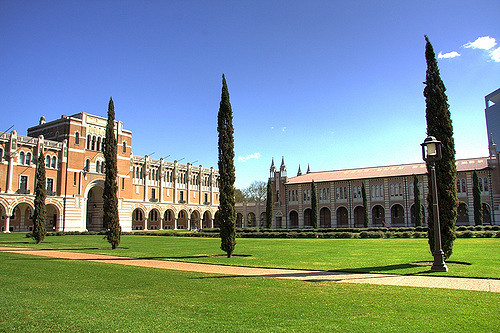There is a dearth of comprehensive information available about higher education programs nationally. What little information we do have on programs is dated and in urgent need of updating. Colleges and universities are an increasingly complex enterprise demanding academic study and professionals prepared to lead them. In today’s post, I want to share some thoughts on how to support high quality higher education programs.

Program Autonomy
Within the appropriate limits of organizational administrative needs, higher education programs must be given autonomy to make necessary program decisions regarding students, the curriculum, and staffing.
Programs should decide who and how many students to admit as well as what credentials to offer.
As a graduate education program, resources to support graduate students in master’s internships or doctoral research assistantships are vital to the health of any higher education program.
In fact, the need for directed resources is even more important for higher education programs as they typically do not have a large number of undergraduate courses that can fund students as teaching assistants.
Higher education programs should make decisions regarding the program of study for their students. Questions about the core body of knowledge and skills necessary are best made by faculty in the program.
In addition, core program faculty are the ones to make decisions regarding appropriate areas of inquiry and the overall mission of the program.
Since the vast majority of programs exist within education schools, our colleagues need to understand the vital differences between our programs and those preparing K-12 teachers and administrators.
We, as higher education faculty, have a responsibility to communicate with those differences and to articulate what our programs need.
Programs need autonomy to make decisions about appropriate staffing including who teaches courses, who advises students, and who directs theses and dissertations.
Questions of faculty workload are best determined in consultation between deans, department chairs, and individual faculty.
This is another area where our graduate-only focus makes benchmarking and comparisons within the school difficult.
For example, traditional measures of output such as student credit hour production are often misleading and at times meaningless when comparing undergraduate teacher preparation programs to higher education doctoral programs.
Higher education programs should encourage assessment and evaluation on an equal and proper basis to demonstrate the success of our teaching, research, and service efforts.
Creating a High Quality Program
As with any academic endeavor, the creation of a high quality program begins with the selection of faculty. Five criteria should be considered when searching for new faculty: scholarship as evidenced by research, publications, and presentations; academic background and training; participation and involvement in scholarly and professional organizations; balance with existing expertise of the faculty; and experience.
Too often, there is a belief that anyone who has worked in a community college or university can teach in a higher education program.
This line of reasoning extends to all areas of the study of higher education; for example, anyone who teaching in an academic discipline can teach college teaching or anyone who works in a policymaking role can teach policy courses.
This type of approach is a discredit to the strong empirical and theoretical work done in our field over the last twenty years.
Many programs use current or former administrators to buttress the standing faculty and their perspective is certainly beneficial to student learning. However, a mix of faculty backgrounds is necessary to properly prepare students in theory and practice.
The use of a core full-time faculty trained in the theoretical foundations of higher education with the use of practitioners augmenting the full-time faculty’s expertise provides an appropriate group of instructors for training future administrators and faculty.
College Teaching
As a field, higher education needs to place greater emphasis on the preparation of college teachers.
In an era of market domination and student consumerism, teaching and learning must be given new emphasis in the university. Yet, very few Ph.D. programs prepare students for their teaching roles.
This lack of preparation occurs in spite of the fact that many Ph.D.’s are landing at primarily teaching institutions and even those at research universities bear the responsibility for training the next generation of researchers, which is vitally important.
At colleges and universities throughout the country, teaching assistants are put into classrooms with little understanding of pedagogy or even how to prepare a syllabus.
The preparation of college teachers is a service that higher education programs are ideally suited to fulfill. Programs should explore offering teaching certificate options, teaching academies for faculty, and options for students in other disciplines to minor in higher education.
This type of endeavor can provide research opportunities for faculty and students, improve teaching and learning on campus, and place higher education programs in the center of institutional activity.
An effort to improve college teaching is a perfect example of the type of mix of theory and practice that should be the vanguard of every higher education program.
This post is based on an excerpt from The Current Status of Higher Education Programs: Findings and Implications (2007).





